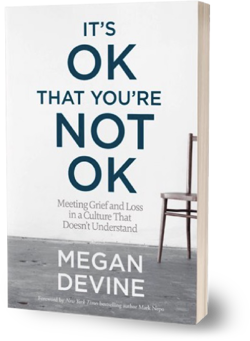Grief Resources
Some things cannot be fixed. They can only be carried.
Grief can be overwhelming. Start here.

If your life has exploded into a million little bits, you don’t need platitudes. You don’t need cheerleading. You don’t need to be told this all happened for a reason. All of our grief resources are designed to help you survive what has been asked of you, or help you support the people you love.
A lot of my work is for the people around you - things that make us better friends, better supporters, better therapists. But really, I made all of this for you: it’s grief support that doesn’t suck. Follow @refugeingrief on most social media platforms for even more resources for grieving people.
Grief needs expression. The Writing Your Grief 30 day e-course gives you the space to tell the truth about what it’s like to be you, right here and now, without the need to sugarcoat it or censor yourself to protect other peoples’ feelings. Join over 10,000 people in this best selling, self-guided course.
If you've ever wanted Megan's advice, need a script to help you communicate clearly, or just need to know if you're doing grief "right," our live grief support session is the place to be. Once a month, Megan hosts a live Q&A for patrons: ask her anything and connect with other grieving people. Join now and get access to all the previously recorded sessions: that's 100s of hours of Megan's advice!
